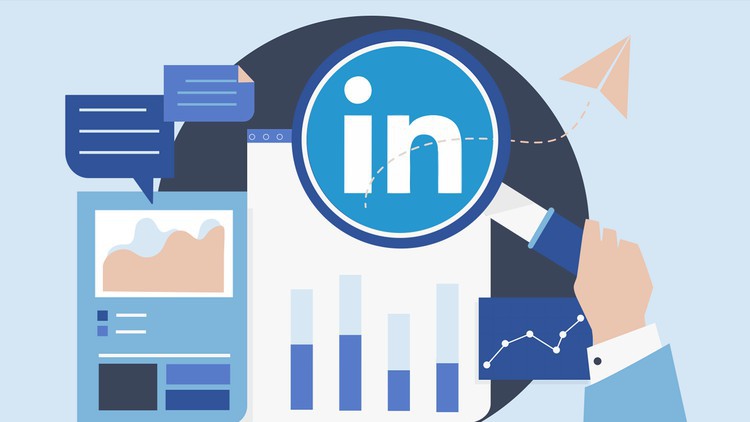Mining and Analyzing LinkedIn Data
Extract and analyze your LinkedIn network with the help of Data Science and AI techniques.
What you’ll learn
Mining and Analyzing LinkedIn Data
- To hide real information, make fake usernames.
- Explore and look at information about your contacts’ companies and jobs.
- You can use the edit Levenshtein distance, the n-gram similarity, and the Jaccard distance to figure out how similar two strings are to each other.
- Cluster contacts based on how similar their positions are, and then make HTML views of the data to make it easier for people to see it.
- Use location APIs to get the latitude and longitude of your contacts, so you can figure out where they live and what country they live in.
- Using the k-means algorithm, group contacts together.
- Natural language processing can help you look at your LinkedIn text messages.
- To see which words are used the most, make a word cloud.
- Remove words that have names from text messages.
- A sentiment classifier can be used to figure out the polarity of LinkedIn text messages.
Requirements
- Logic in programming.
- Basic programming in Python.
- LinkedIn is not required.
Description
LinkedIn is a social network that focuses on professional experience in order to make connections and relationships between people who work in different fields. Professionals can share their skills and look for jobs by connecting with people all over the world. For example, if you want to work in Data Science, you can connect with companies and people who work in this field. This will help you get a job. It’s also possible for employers to find people based on their curriculum and skills. With the help of both professionals and businesses, LinkedIn became the most important business platform in 2017 and a very important strategic tool for both.
In order for professionals to use this social network in their favor, they need to know how to use the information in this way. If you have a LinkedIn account, there are some datasets that are related to your profile that you can use Data Science and Analysis techniques to find important and interesting things about your network of connections. We can say things like this: People who are close to us: What are their main jobs? Which companies are sending us invites to their events? Our contacts are in what city or town. The people and businesses in our LinkedIn network aren’t all people or businesses that we work with. Are the companies I want to work for inviting me to join them?
Below, you can see the main things that will be done step by step:
- Use the LinkedIn API and.csv files to get data from your LinkedIn profile. If you don’t have LinkedIn, you’ll be able to follow the course using the information about my profile that I will give you in the class.
- To hide real information, make fake data.
- Explore and see data about your contacts’ companies and job titles.
- Levenshtein distance, n-gram similarity, and Jaccard distance are three ways to figure out how similar two strings are to each other.
- Cluster contacts based on how similar their positions are, and then make HTML views of the data to make it easier for people to see it.
- Use location APIs to get the latitude and longitude of contacts so you can figure out where they live and what country they live in.
- Cluster contacts with the k-means algorithm.
- Natural language processing can help you look at your LinkedIn text messages.
- Create a sentiment classifier to figure out the polarity of messages on LinkedIn.
When you take this class, we’ll use the Python programming language and Google Colab, so you don’t have to spend time setting up the things on your own computer. As long as you have a browser and an Internet connection, you can take the course If this is your first time working with social media data, this is the best course for you!
Who this course is for:
- Anyone who wants to learn how to use social media data for data analysis.
- It looks like people want to use Artificial Intelligence and Data Science to analyze data from social networks.
- Getting data from social networks is something that people are interested in.
- These are undergraduate students who are studying things like Artificial Intelligence or Data Science, or Data Analysis.
- They want to learn more about the people they connect with on LinkedIn.










